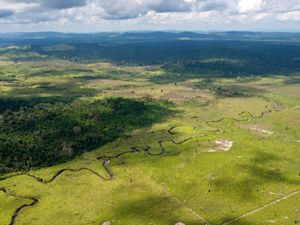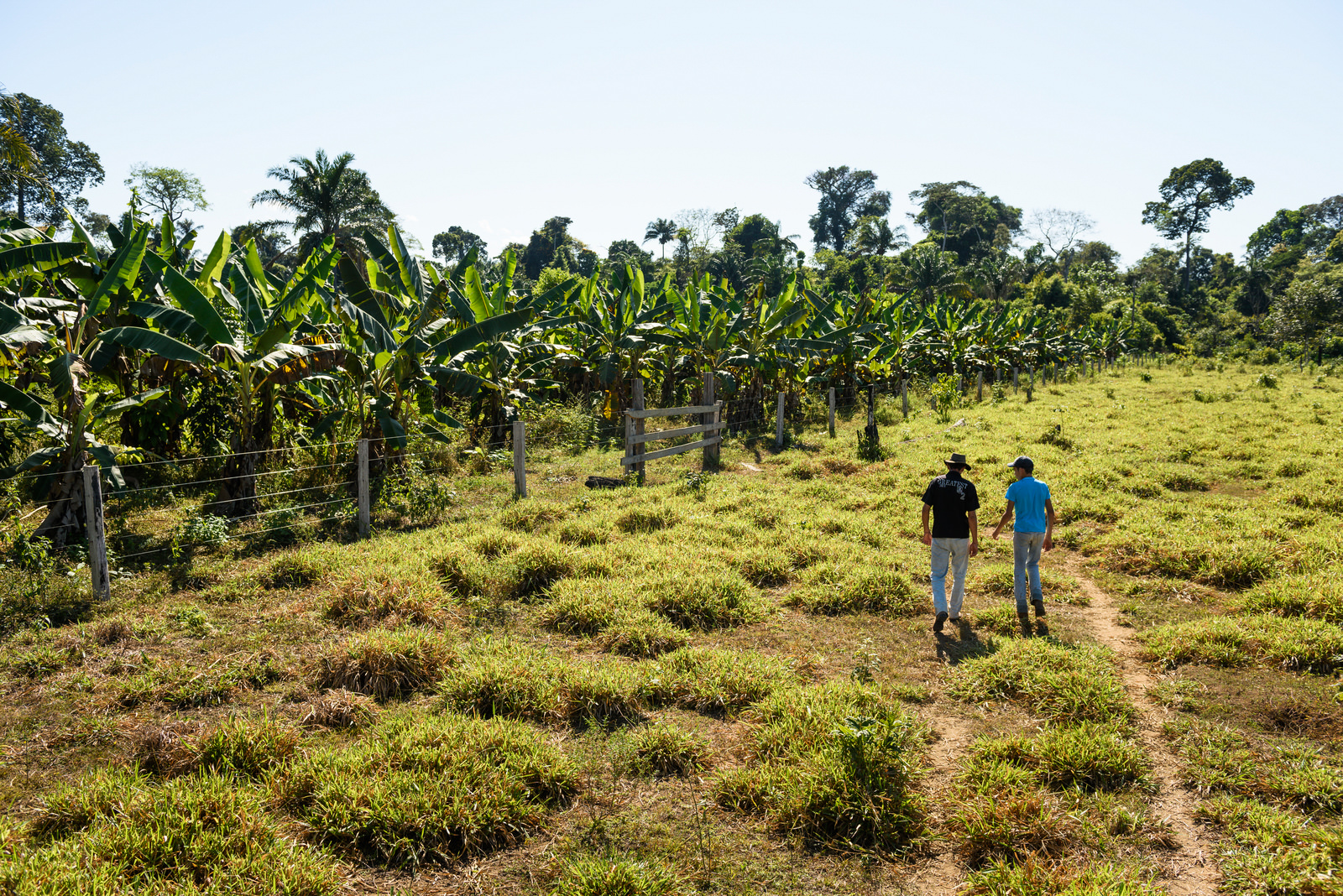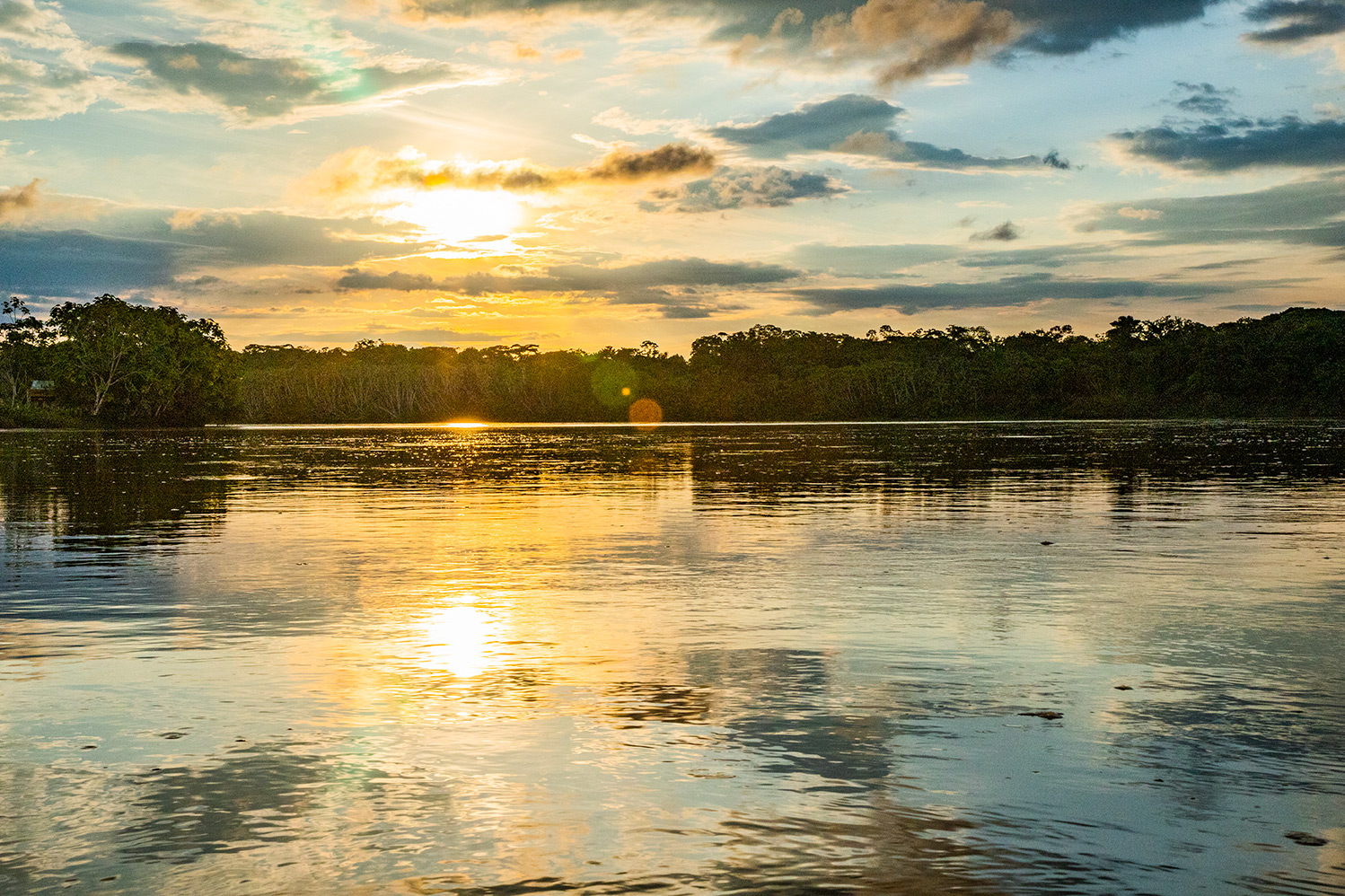Restore the Amazon? Small Farmers Are Key
Changes in small farming practices could reverse deforestation and raise incomes in the region—here’s how we can make that happen.
Few ecosystems on the planet receive as much attention—both from conservationists and the broader public—as the Amazon Rainforest. That’s no surprise, given the Amazon’s importance as a biodiversity hotspot and its role in regulating the global climate. But despite all this focus, the Amazon is still disappearing at an alarming rate, and some degraded areas in the southern part of the forest have gone from being a carbon sink to emitting more greenhouse gases than they absorb. That’s bad news for nature, for the climate, and for the millions of people who depend on the Amazon, both in the region and around the world.
But conserving this crucial ecosystem is more complex than it might appear from the outside. In Brazil alone, which is home to about 65 percent of the biome, there are many interconnected reasons driving the loss of the Amazon: there’s the direct clearing of rainforest of course, but also out-of-control fires, increasing pressure from small farmers struggling to grow enough food, and the vicious feedback loop of climate change. Addressing these challenges requires a people-centered approach that accounts for the whole system: we have to move away from human and economic development at the expense of nature to a model of development where people and nature thrive side by side.


This is the vision of a new partnership between The Nature Conservancy (TNC), which has been working in the Amazon for 20 years, and Amazon Inc. Working together, we will help 3,000 local farmers in the Brazilian state of Pará to grow and sell agroforestry products such as cocoa beans from newly planted trees, creating a more sustainable source of income, while also restoring native rainforest and fighting climate change by naturally trapping and storing carbon.
Pará is twice the size of France and currently home to 9 percent of the world’s tropical forest—a pristine area of native vegetation four times the size of the United Kingdom. Unfortunately, it also holds the fastest deforestation rates in Brazil. About 33 percent of the deforestation in Pará in 2020 took place across the 360,000 small farms in the state.
The deforestation in Pará has many different causes, but two key elements are a lack of technical assistance for small farmers and lack of income alternatives. In the face of limited options, clearing more forestland for agriculture is the most rational business decision for many families. But agricultural production and deforestation don’t have to go hand in hand.
Quote
Selling agroforestry products from newly planted trees creates a more sustainable source of income while also restoring native rainforest and fighting climate change.
Agroforestry is the practice of growing food crops and native trees in the same land area. This approach is ideal for maintaining and regenerating the health of the planet’s soils, capturing carbon and providing habitat for wildlife, while also ensuring long-term agricultural production. Cocoa trees are native to the Amazon Rainforest and a popular crop in Pará, making them particularly well-suited for agroforestry in this area. Young cocoa plants need shade and can be grown in forested areas without clearing the land, or planted on previously cleared lands alongside other vegetation to restore the native rainforest.
The project in Pará will require significant financial investment and technical innovation, and that’s where carbon finance can help. The carbon that is sequestered from the atmosphere by restoring the region’s forestland will support high-quality carbon offsets that will be credited to Amazon Inc. to complement the company’s assertive decarbonization efforts. Over the next three years, this project aims to restore 20,000 hectares of land—an area about the size of the city of Seattle—and remove as much as 10 million tons of greenhouse gases over the next 30 years.


To reach these intended goals, TNC will work locally with key partners like the state of Pará, the World Agroforestry Center (ICRAF), local NGOs, research centers, municipalities, private companies, cooperatives, farmers unions and other local stakeholders. In return, Amazon Inc. will work with TNC to provide farmers with the resources and technical assistance needed to implement and maintain the agroforestry projects. An ongoing monitoring and governance plan will ensure the integrity of the carbon credits and that farmers continue to benefit from their investments. This in turn means a more sustainable livelihood for those farmers, new habitat for wildlife, and more carbon stored in plants and soil where it won’t heat up the planet—truly a win-win-win.
Quote
We hope to demonstrate that protecting nature can be a profitable business.
These 3,000 farms are just the start though. We hope to demonstrate that agroforestry and carbon markets are viable business models for small farmer communities in the Amazon—in essence, that protecting nature can be a profitable business. We can demonstrate that nature is an asset, not a potential liability. Because the only sustainable path for our future is one in which people and nature thrive together.
Global Insights
Check out our latest thinking and real-world solutions to some of the most complex challenges facing people and the planet today.




